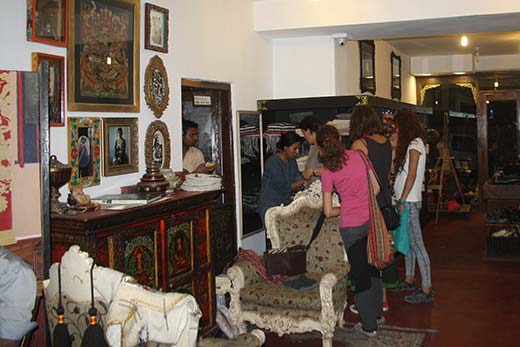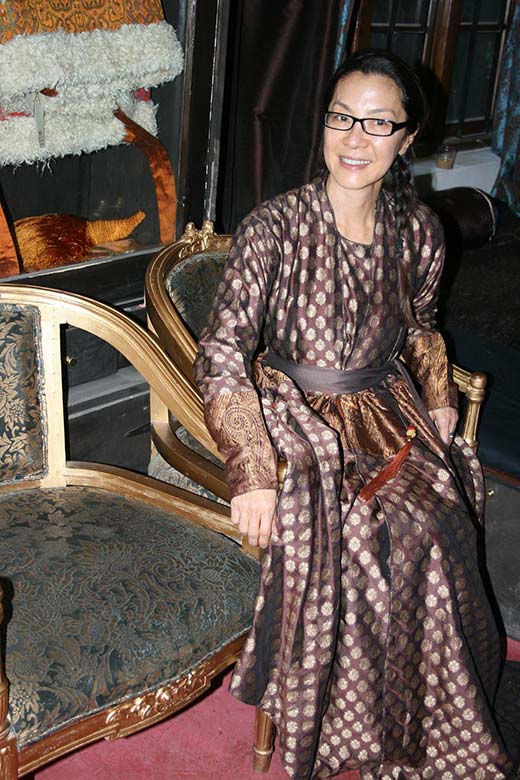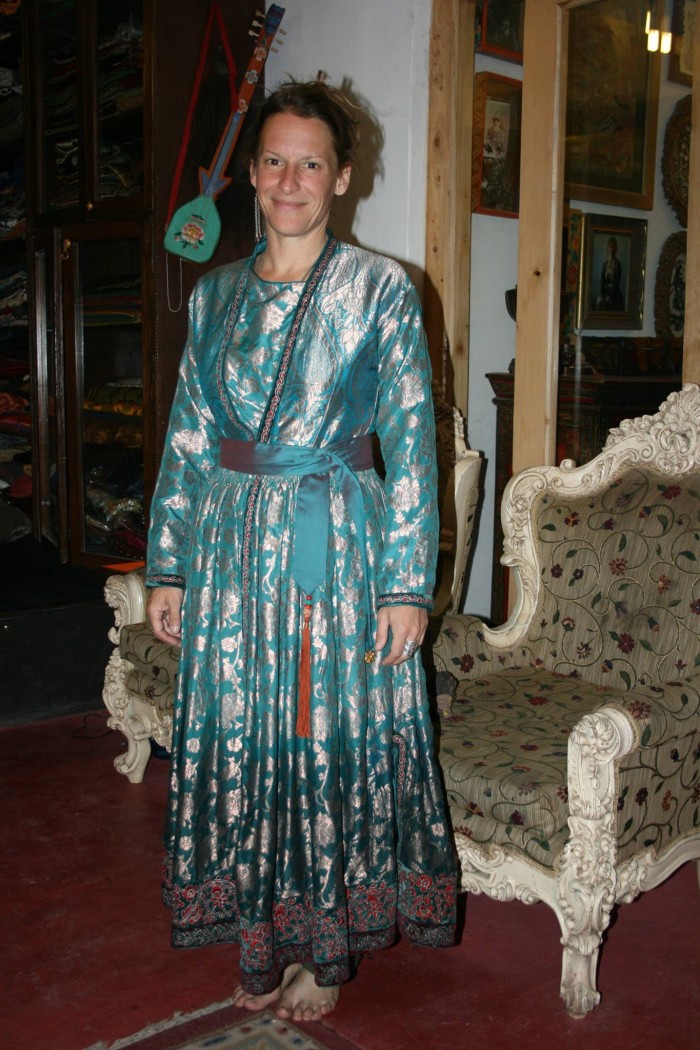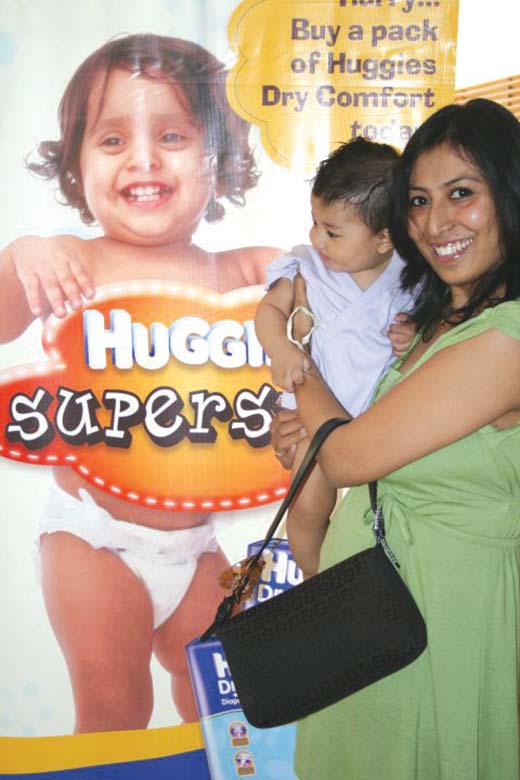A designer couple from Leh gave up their lucrative jobs in Indian fashion industry, returned home, revived their umbilical connection with the huge talent resource of Ladakh’s mystifying craft and culture rooted in Buddhist traditions. With their venture Jigmat Couture, barely five years old, the couple created a brand that is more famous in Bollywood and Hollywood than in Srinagar, Bilal Handoo reports

It was a homecoming of different kind for the Leh couple in the summer of 2010. They had given up their lucrative jobs in India’s surging fashion industry only to make a new beginning that started on a sour note. On August 5, 2010, the day they were dating their new destiny, they threw a grand opening to some 100 people for Leh’s first designer outlet. By evening, flash-floods struck Leh, making muck of everything.
Fifteen days later, the designer couple was back on song. But then, concept was new, and takers were none. The cold response hardly perturbed Jigmat Narbu and Jigmat Wangmo. They knew, they were on right track. Subsequent days only proved that.
Back in mid-nineties, nothing much was happening in Leh. Jigmat Narbu then a fresh Class 12 pass-out was exploring his options. For the son of an All India Radio engineer, a friend became a guide. “Since you are a creative person,” his friend told him, “so why don’t you go for the fashion designing.” The suggestion was too appealing to turn down.
Soon Narbu took a flight from Kushok Bakula Rimpochee Airport (or Leh Airport) to Chandigarh to take admission in three year fashion designing course at National Institute of Fashion Technology (NIFT). His creative acumen shortly flourished in the institute, which bestowed him with NIFT’s prestigious student award for the Most Commercial designer. As the word of his talent spread, an American fashion house chose him as their brand designer. By 2000, he was a graduate and was already a name in fashion industry through his designer label, A&M.
During the same time, a Class 12 girl student in Leh was silently getting motivated by A&M. Jigmat Wangmo hadn’t a hunch that her designer inspiration was her super senior at Leh’s Langdon School. By 2002, she too joined NIFT and was shortly face to face with her inspiration.

Narbu once visited the NIFT for campus selection where he spotted Wangmo. As their interaction began, he realised that she is the ‘chip of creative block’. The duo who shared the same hometown, the same school and the same fashion institute stayed in contact thereafter. By 2005, Wangmo finished her graduation and shortly worked as a designer for Reebok. By then, Narbu had worked for the prominent brands like Zara, Creative Lines and with some reputed Dyeing Houses of Delhi.
Apart from sharing creative umbilical cord, the two shared love bond, which only flourished over the span of time. They eventually tied wedlock in 2007 and shortly flew out to resume their designing jobs. Both were perfectly settled and were drawing lucrative salaries — Narbu over Rs 2 lakh and Wangmo plus 1 lakh per month. But in their moment of retreat and respite, they began thinking about Ladakh and ways to come back to open their own research-based fashion designing enterprise.
But starting fashion-related venture in Leh seemed suicidal for the duo at the outset. They had to brave the dominant perception that “only your best friend or worst enemy would visit Leh”. Even their parents ridiculed their decision. But the couple knew Ladakh was changing fast and emerging as a favourite tourist destination. They were silent witnesses of huge tourist footfalls in the cold desert during summers. Despite knowing it all, they patiently faced the perceptible pressures.
The couple kept its cool and continued researching before taking a final call of return. Narbu knew it wouldn’t be easy for them to get going as the local market had nothing to offer. He himself had to buy the dress for his bride from China in 2007. They kept surveying local textile market, collecting details – how Leh dresses and used to dress. It took them a year. By summer 2010, they ventured into Leh’s virgin designing market. It coincided with flash-floods.

Almost two months had passed and yet, Jigmat Couture, the first showroom of its own kind in Leh was yet to register a single sale. Locals were still chatting, mocking and ridiculing the very concept of the couple: ‘earning handsomely outside and returned to doom’. These snibs, however, didn’t prevent them to stuff their showroom with in-house woollen, silk brocades from Banaras and Lenin from Aditya Birla Group.
Without letting detractors to cloud their vision, the couple kept decorating their showroom with Ladakhi style furniture and wall hangings with European fashion touch. Shortly the collection having natural dyes, fine silk and silver thread embroidery came up. It reflected a sense of exquisite workmanship and uniqueness. Some fashion connoisseurs even termed the quality and workmanship of Jigmat Couture at par with collection exhibited in celebrated Indian fashion shows.
But the persistent problem remained: Leh wasn’t responding to the concept costing the couple over Rs 2 million. They were into high-end selling. Their range was from few thousands to few lakhs. The price tag was perhaps still lavish for the locals.
Two months elapsed. And they were still waiting for the first customer. Then, a German lady showed up at their showroom. She bought their first bridal worth Rs 35,000 despite people talking that Ladakh wasn’t the market for the fancy fabrics. “After that,” says Narbu, an average built man with smiling face, “it never stopped.” As sales ticked, the locals became receptive to Jigmat Couture label.
After local market mobilised, the designer couple then began cashing their fashion industry contacts. Shortly the duo created a wave across India by dressing Jammu, Singora, Rajasthan royals. The next stopover was the Bollywood.
Since the designer couple offers western fusion fabrics besides traditional outfits, they wooed international market to Leh. Soon they started two joint ventures – one in Boston and another in London. Both these designer outlets are packed with their stocks. Some designs are also creating waves in Beverly Hills. “Hollywood actresses, Liza Fox and Lily Colly, are our regular customers,” says Wangmo, attending foreigners in her Leh showroom. “With one of these actresses, we are opening a joint venture in London.”

Besides designing, their fabric detailing equally makes Jigmats tempting for shopping. Their ability to ‘think out of the box’ clicks customer’s curiosity. No loud add-ons are involved in their designs. They offer pure silk jamawar, gaiser, pashmina, yak hair fabric, khenkhap, angora, hand-woven woollen outfits, oriental-western blend fabrics and fusion of traditional fabrics in western silhouettes. “Our unique designs work for us,” says Narbu. “We don’t repeat our designs. We believe in one garment, one design motto.”
But to prepare such designs they needed well-trained tailors at first. Leh didn’t house any of them. “The problem was,” says Narbu, “we weren’t into trouser making, which is also a fashion. But that’s not our thing. Local tailors were mainly into that and were unaware of design language.”
To overcome the crunch, they hired some 20 outside workers besides engaging artisans from Changthang, Zanskar and other remote corners of Ladakh. With their help, the couple prepared dresses with myriad colours, fine embroidery and sensuous texture.
The depth and details of their works is enhanced by breathtaking embroidery. It is employed with fine needlework with pure silver thread and pearl stones. The finished product – a combination of warm texture of Himalayan wool, pashmina and silk – appears a visual treat besides a piece of art. “By offering exclusively Ladakhi outfits with local treatment is our USP,” Narbu flashes another smile. “We don’t believe fiddling with traditional outfits. We don’t do modern things to traditional dresses. No matter how much money we will be paid.”
Known for offering the best tailor-made souvenirs, their customers-cum-connoisseurs often suggest them to charge high, but then they face the moment of truth—“as in India, machine-made continue to sell higher than handmade”.

Amid productive run of their venture, they have started shifting focus on textile research. Textiles were an inseparable part of the lives of Ladakhi people, they say, thriving art of weaving and redefining the goncha (male and female robes). For them, textile is a very fascinating subject. And anything related to that coming to Ladakh (being the centre of Silk Route) is their interest.
Their plan is to build a Textile Resource Center by 2016. The resource centre is coming up at Skynos Gogsum in Leh’s old town area, also their family home. It will be a “Textile Hub” and museum that explores past, present, and future of textiles. “Last year,” Narbu says, “some 100 students turned up in Leh to study textiles. In absence of resource centre, they ended up approaching nomads who didn’t make the things clear to them. So with this resource centre, I will be providing the best facility to students and scholars.” The designer couple is in high demand because of this devotion.
Today they are getting offers to mass-produce the cloth using a machine loom. But they turn down such orders only to stay focussed on quality and preservation of the art of handloom textile production. With their creative touch, they are now producing different wools using back strip and throw shuttle looms. They have already produced camel and yak wool, something very unique to Leh. The existing looms only produce sheep and goat wool. “We can produce donkey wool or the wool from any animal,” Narbu says. Their looms yearly produce 400 to 500 woollen rolls, taking their turnover in crores. Even then, mass market is hardly clouding their creativity.

The couple works on some pretty high standards, which they believe, are missing in mass market. “We are creative people,” says Wangmo, who bagged the Most Creative Designer award back in NIFT. “We don’t know how to make uniforms.” Because of this clear vision, they don’t showcase their stock in fashion shows and exhibitions, even after getting invitations. They want to stay aloof to concentrate on the research, Wangmo says. “Fashion shows are all about marketing your product. I don’t think we need that.”
Wangmo attending customers at her Leh showroom says there is a least scope for making error in their line of work. “We won’t create anything to regret upon later,” she says. “That’s why we approach things with meticulous detailing and planning.”
And for that, they follow the three-step principle: technical, styling and marketing. “We both know our roles well without interfering in each other’s work,” she says. “While I handle technical part, Narbu handles the rest two parts.”
The method uplifted by creative outbursts hardly leaves a margin for error for the couple – for whom, designing is a “spontaneous” process. The couple is also portraying history, culture, political aspects of Leh on their hand-woven rugs, carpets and shawls. They are also reviving Tibetan and traditional Ladakhi jewelleries, besides venturing into wedding designs.

Before 2010, the winter weddings were arduous tasks to arrange in Leh. But now, Leh is a safe-haven for such weddings. There are no prizes for guessing how the change struck. The Jigmats with their penchant for the promotion and preservation of Himalayan cultural heritage have made winter bridal available. Their winter outfits have ended the monopoly of Kashmiri woollen coats in Leh market.
After changing the way Leh dressed, the couple believes the change happened because of their belief that “every item of clothing one chooses is an expression of the one’s personality”. It didn’t take them long to realise that their expression is the expression of arts. Their baby son Jigmat Tanzin – a baby model for Huggies diapers, is already exploring the same expression.
And now, when the designer couple looks back, they sense, “Whatever we did was the creative service to Ladakhi textiles”. It isn’t just about the fusion of east and west through design, they say, but weaving to revive different Ladakhi textiles together.
In view of this design standpoint, it seems the summer decision dampened by the flash-floods was too creative to be cow down. The same creativity is now a buzzword in Leh, where these days they say, dress it like Couture!















